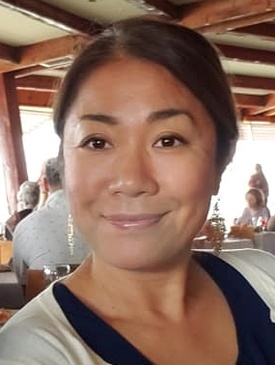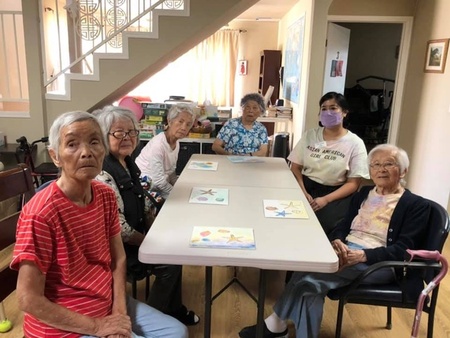Divorce in my late 30s was a turning point
The news of the sale of Keiro, a nursing home in Los Angeles, attracted a lot of attention a few years ago. Japanese-Americans and Japanese retirees applied to live there as their final resting place, and there were many names on the waiting list. The secret to its popularity was that Japanese food was served, classes on Japanese culture were held within the facility, and above all, Japanese-speaking residents could interact with each other and with staff. Now that the facility has been sold to an American real estate company, many Japanese retirees are worried about where they will spend their retirement years, and are worried about their future. At that time, I learned about a Japanese woman, Seiko Iso, who runs a nursing home in San Diego called Ohana Care Home. I interviewed her online to find out how she ended up opening a nursing home.
Seiko first went to the US in 1995 to study at a community college in San Diego. She then aimed to transfer to a four-year university, but returned to Japan due to lack of tuition fees. "I ended up working for Nissan and had a fun and fulfilling life in Japan. But I couldn't give up on my dream of going back to America and graduating from college, so I came back to San Diego just before turning 30. My parents told me, 'You don't need to go to college. I want you to get married and have children,' but I ignored them (laughs) and went to the US, determined to graduate this time."
Later, after getting married and divorcing in her late 30s, Seiko came to a turning point. "I wondered what my life would be like from now on. There were no jobs available if I returned to Japan. I didn't have children to look after me, so if I stayed in America, I would end up in a facility when I grew old. One of the reasons I thought it would be nice to have a facility where I could eat Japanese food. I also majored in business at university, so I thought there might be a business opportunity in a facility that served Japanese food for Japanese people."
Seiko immediately found a business consultant on the Internet and asked for advice on the know-how of opening a nursing home. She looked into various locations, but could not find a suitable property, so she finally decided to convert her own home into a nursing home. She then obtained a license to turn her home into a nursing home and also obtained qualifications as a manager.
"There were four rooms on the first floor, so we decided to use them as a nursing home and I lived on the second floor. Next, we placed a job advertisement, attracted caregivers, and provided training. Now we have 13 caregivers working on a 24-hour shift."
While 85% of the residents are Japanese, the caregivers who look after them are a diverse range of races, including Japanese and Filipinos.
Staff growth is rewarding
When asked what the most difficult thing about running a nursing home was, Seiko replied, "The turnover of caregivers was so fast, so we had to go through a lot of trial and error. It's my fifth year now, but it took about four years of continuing to select good staff, and at the same time, we also worked to create a good company culture. As a result, we reduced turnover and I think it has strengthened the bonds between staff."
Currently, in addition to the first house, they have also opened a second facility that can accommodate 15 people. However, in order to operate more efficiently, they have temporarily closed the first house and are now consolidating residents and caregivers in the second facility.
Next, I asked her about a happy episode from running a nursing home. Seiko said, "When I opened the second facility, I thought that the staff member who had been working with me from the beginning would not work at the second facility because she would be far from her home. What's more, she is not good at driving. I was really happy when she said she would still work with me." When I said, "Surprisingly, it's not an episode with the residents," Seiko said, "Of course, I'm happy when the elderly women say 'thank you.' I feel that I'm glad to be doing this business and that it gives me a purpose in life. But my joy is seeing my staff grow. Many of our caregivers are immigrants. I can understand the struggles and dilemmas of living in America as a foreigner like me, and I want to support them." Hearing this story reminded me of the words of a manager of a first-class hotel who said, "In order to make our customers smile, I have to make the staff who serve them smile. If the staff aren't happy, the guests won't be happy either."
Next, we asked Seiko about her feelings for the residents. "No matter how many years I've lived in America, I feel I can share the same feelings as a Japanese person. Even though they require a lot of work to look after, the elderly ladies are really cute. Sometimes they ask me to take them to the bathroom every 15 minutes and I respond by saying, 'I just went there, didn't I?' (laughs), but I always treat them with love."
When asked what her vision is for 10 years from now, she answered as follows: "I might start another business outside of just nursing care, and I'd like to continue supporting young people who have immigrated to this country and are working hard. And in the future, I'd like to return to Japan. Living in America for so long has made me realize just how good Japan is. I'd like to live a life that is half American, half Japanese."
Seiko is currently playing an important role for both young immigrants working hard in America and the elderly, including Japanese people, who are spending their retirement years in America. We hope that she will continue to be successful and that the nursing home will continue to exist.
* Ohana Care Home website
© 2022 Keiko Fukuda







